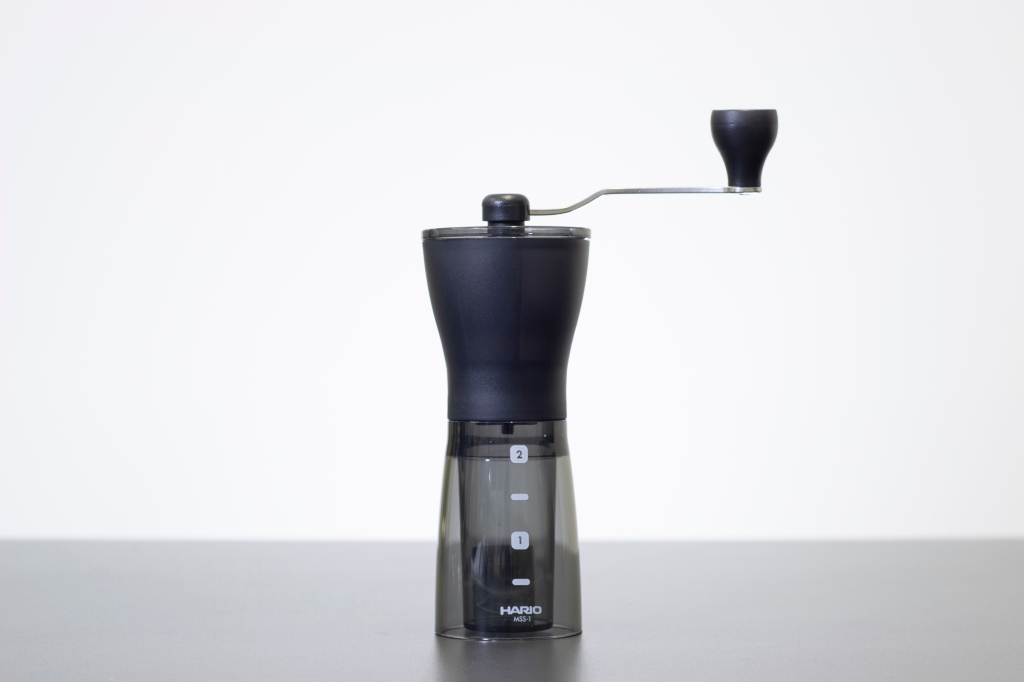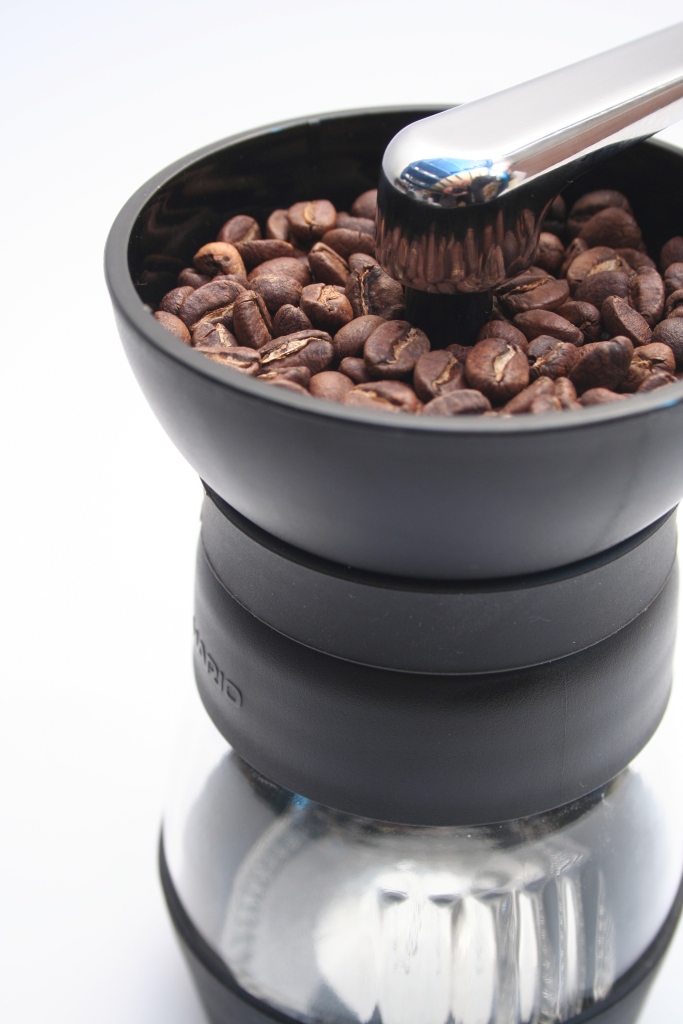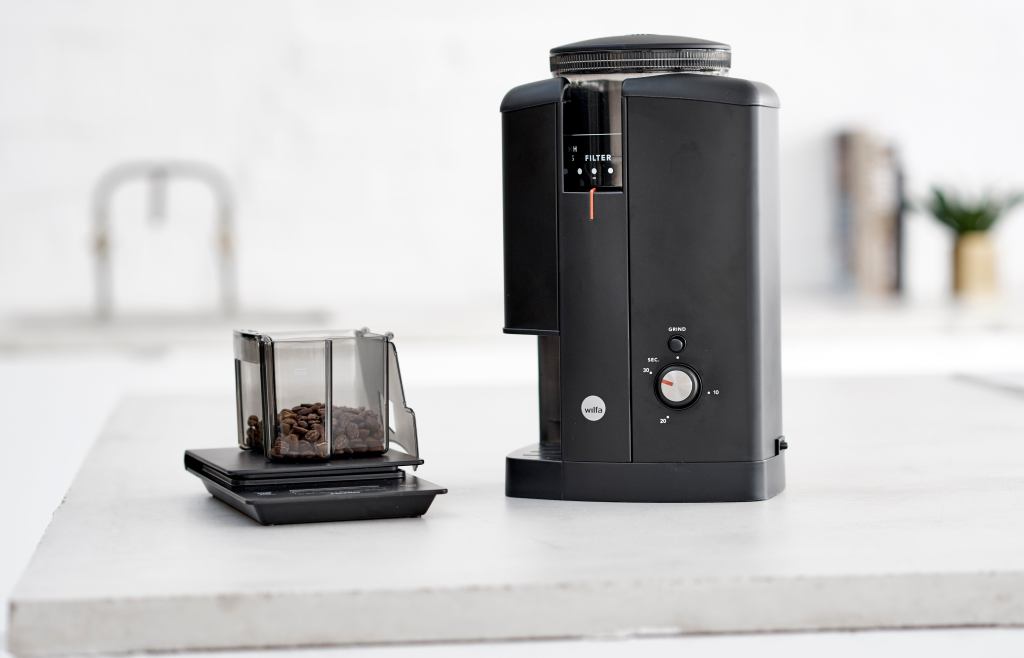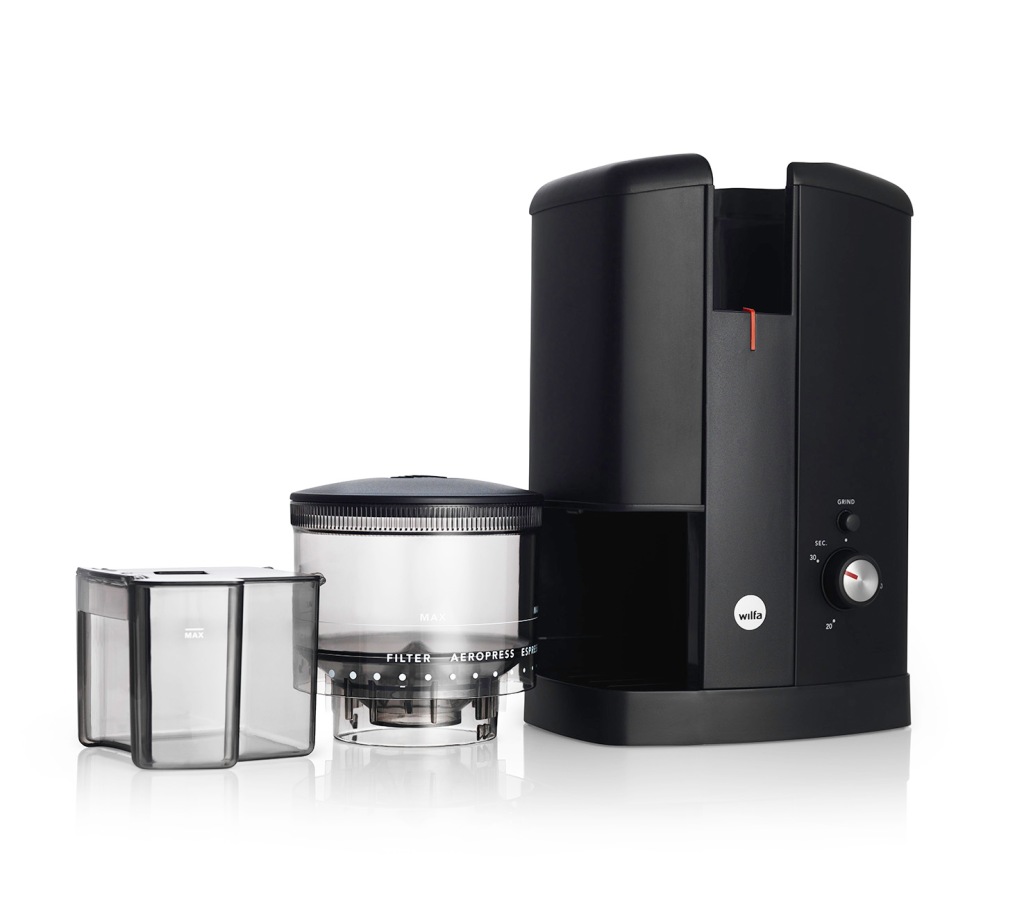Choosing a Coffee Grinder
There is no doubt that the aroma and flavour of freshly ground coffee far exceeds that of a pre-ground product. The volatile compounds which give coffee its character and flavour are far more protected in whole bean form allowing you to unleash the potential of the coffee at the moment of brewing.
There are a wealth of grinder options on the market but the range we stock on our website have been tried and tested by our team. All have been used at the Roastery, at home and, in the case of the Mini Mill, on our travels. This is the kit our team uses on a day to day basis to brew their coffee.
Three Main Types
Coffee grinders fall into three broad categories, depending on their use. Some are designed for what we call ‘brewed coffee’. These grinders work with all methods of brewing except espresso (such as cafetière, filter, Aeropress and mocha pot or stove top). There are also espresso specific grinders which operate in a small but very fine range. Finally there are a small number of grinders which will grind for all methods of coffee making, from the coarseness needed for a cafetière through to the very fine grind needed for espresso.
What about cost?
Generally speaking hand grinders are the most cost effective option. If you are happy to engage in a little exercise each time you need a coffee then for around £35 you can buy a very good hand grinder. Hand grinders are also very portable allowing you to take your favourite coffee on your travels.
Electric grinders obviously make the whole process so much quicker but cost a little more. Where brewed coffee is concerned, you can buy a grinder for around £100 but if espresso is your thing, you will need to up your investment. An effective espresso grinder is going to set you back in excess of £300.
Hand or electric – which is best?
This is very much going to depend on how you like to brew your coffee and your daily routine. Coarse ground coffee is much easier and quicker to grind than a finer option. Similarly, smaller amounts of coffee will be easier to deal with. So, for example, if you only ever brew a single serve cafetière, then the 20g of coffee you need can be easily ground in a small hand grinder. On the other hand, if you brew a litre of filter coffee at a time, you might find grinding the 60g of coffee a little bit of an effort.
Electric grinders are usually easier to adjust than their manual counterparts. If you like to brew using different methods then continually adjusting your hand grinder might become a laborious exercise.
Personally we own both a hand grinder and an electric version. On a day to day basis we will use the electric grinder as we will generally brew around three quarters of a litre at a time. However the hand grinder is light and easy to carry around so we will always pack that into our bags when we head off on our travels, whether it is an overnight stay in a hotel or a wild camp in the hills.
Before we delve into the various grinder options, just a quick note on espresso specific grinders. We purposely haven’t considered them here as the choice is complex and there are numerous variables to consider. If you are looking for an espresso grinder, please get in touch and we can suggest some options based upon your budget and machine.
Hario Mini Mill Plus Hand Grinder
This is our constant travel companion whether overnighting in a hotel or wild camping in the hills. It is very compact, easy to adjust and the whole thing can be washed under the tap! We use this with our Aeropress so will only be grinding 10-20g at a time which also makes it perfect for a single serve cafetière. Making adjustments to the grind is really easy using the simple threaded nut inside.
Hario Skerton Plus Hand Grinder
While not as portable as the Mini Mill, the Skerton will grind quicker and easier thanks to its size. This is a very cost effective option for a home grinder which will easily deal with grinding coffee for a cafetière, Aeropress, single serve filter or stove top. This grinder will also deal with larger amounts of coffee if you are willing to put in the time and effort needed. Changing the grind setting is relatively easy though the locking mechanism makes it a little more involved. I would suggest this grinder is more suitable for someone who sticks to the same brewing method.
Wilfa Coffee Grinder
This is very much the entry level coffee electric grinder for all types of brewed coffee. This has been our grinder of choice until very recently when we swapped it for the Wilfa Uniform (see below). The Wilfa Grinder is a great piece of kit for a very moderate price. It is easy to use, easy to adjust and easy to clean. There is a hopper on top to hold your beans but we generally leave the grinder empty and only grind the specific amount of coffee needed for each brew. If you want convenience, if you like to brew using different methods, if you brew coffee regularly or if you brew larger batches, then this is the grinder for you.
The Wilfa is available in black or a more cost effective silver.
It is worth noting that this grinder does not have a fine setting for espresso. If you want a grinder which works for brewed coffee as well as espresso then you need the Wilfa Uniform Grinder.
Wilfa Uniform Coffee Grinder
We need some coffee geekery to explain the role of the Wilfa Uniform:
No grinder produces totally uniform particles. All produce a broad range of sizes from coarse through to fine, with the majority of particle sizes being around your chosen setting. The coarser particles in this distribution will offer little to the brew, while the finer particles will tend towards over extraction and bitterness much quicker. As a general rule the more you spend on a coffee grinder, the more uniform the particles will be. This is one of the reasons why espresso grinders are more expensive.
The Wilfa Uniform aims for greater uniformity through larger 58mm flat burrs which rotate at slower speeds. The result is an improved and more consistent extraction and a better tasting coffee. The Uniform is also much quieter and has an auto-off feature which detects when all the coffee has been ground. This is a useful feature as the slower burr rotation results in a longer grinding time. There is no bean hopper on the this grinder to store your coffee: you just grind the specific amount you need for each brew.
There are two Wilfa Uniform options available, the standard model and the ‘plus’ version which has a set of weighing scales built into the lid. In our opinion the standard model is the better option alongside a good quality set of brewing sales such as the Felicita Incline.
If you enjoy espresso as well as brewed coffee, and want a single grinder to produce both, then the Wilfa Uniform is worth a look. It will grind fine enough for espresso and we’ve used it on our commercial machines for this purpose (it produced a really nice coffee). It does lack a fine adjustment so if you only want a grinder for espresso only then there are better options on the market.
So there’s our pick of the bunch, all on our website, subject to availability. If you have any questions about these or any other coffee grinders, please feel free to leave a comment.












